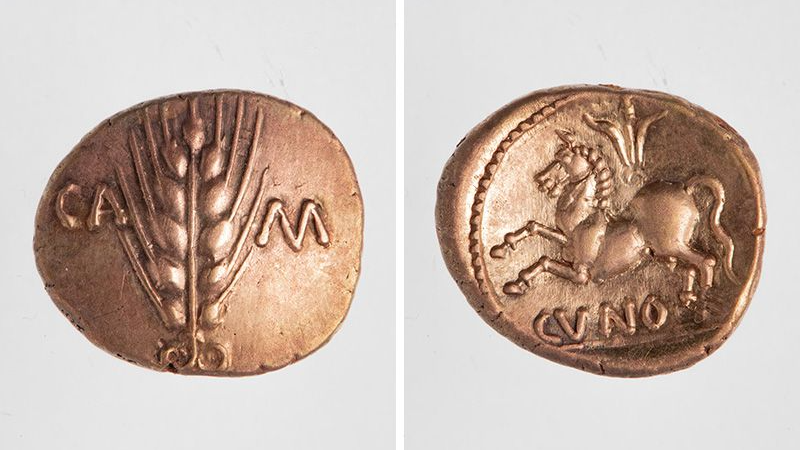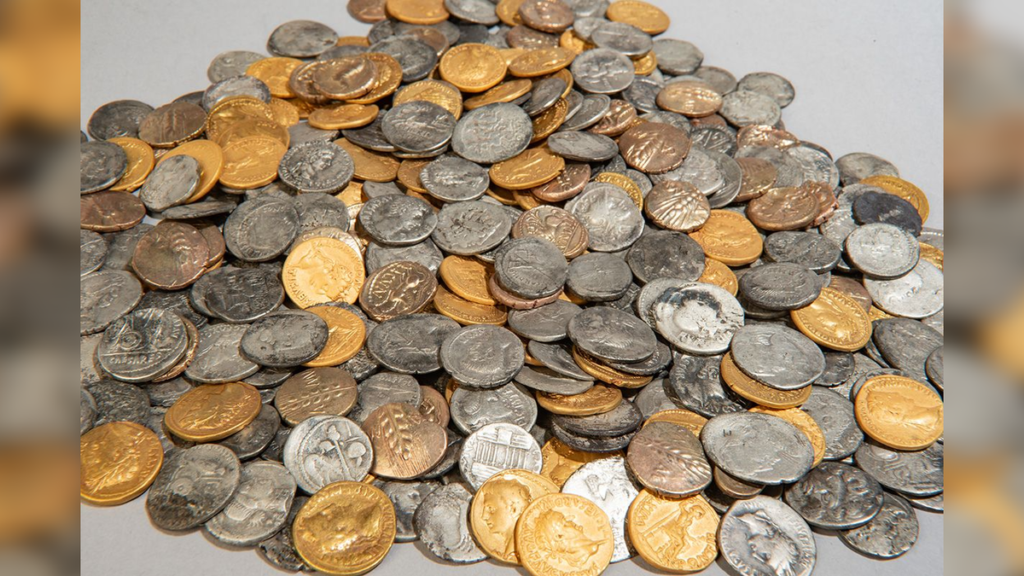Two metal detectorists in the Netherlands have found a hoard of first-century gold and silver coins. The rare mix of Roman and British money features portraits of emperors and kings who ruled from Rome, England and Africa.
The 404 coins were discovered in the fall of 2023 in the town of Bunnik, about 24 miles (39 kilometers) southeast of Amsterdam. The hoard was purchased by the National Museum of Antiquities of the Netherlands, which recently placed them on display in an exhibition called “The Netherlands in Roman Times,” according to a translated statement published Monday (Jan. 27).
Many of the coins were minted between A.D. 46 and 47, during the reign of the Roman emperor Claudius. During this period, the northern limit of the Roman Empire was the Rhine River, where Roman troops were set up to fend off attacks from Germanic tribes and to launch forays into Great Britain.
Of the more than 400 coins, 116 were gold. These gold coins included 72 Roman aurei dating from 19 B.C. to A.D. 47, as well as 44 gold alloy coins, called staters, that were minted in Britain. The staters included the name of the Celtic king Cunobeline (known in Latin as “Cunobelinus”), who ruled from A.D. 9 to 42. The Roman historian Suetonius called Cunobelinus — whose name literally means “strong as a dog” in the Celtic language — the king of the Britons, and the Greek geographer Strabo wrote that Cunobelinus traded precious metals, grain and dogs with the Romans.
Also in the hoard were 288 silver coins, all struck between 200 B.C. and A.D. 47. One depicts Julius Caesar, and there is also a rare example of a coin with Juba, king of Numidia (present-day Algeria), on it.
Related: More than 1,300 coins buried during Roman emperor Nero’s reign found in England

Dutch archaeologists who studied the coins and the spot of discovery think the hoard was likely buried in A.D. 47, according to the statement. A Roman soldier returning from Britain may have collected the Roman coins as his pay and the British coins as war booty. The soldier may have planned to dig the coins up later, or perhaps he buried them as an offering of gratitude to the gods who allowed him to return safely from battle.
This coin hoard is the largest from the Roman period ever discovered in the Dutch province of Utrecht, according to the statement, as well as the first on the European mainland to have a mixed Romano-British composition.
The coins have been added to the National Museum of Antiquities’ National Archaeology Collection and are available for further research.
